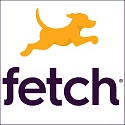Stop us if you’ve heard this one before – a revolutionary new technology will change couponing forever and make paper coupons completely obsolete!
In reality, the road to a paperless future is littered with defunct digital startups that promised to do just that. And now, another company’s dreams of changing the way we use coupons have ended in disappointment.
Mobeam is no longer promising to “bring consumers one step closer to phasing out paper coupons entirely,” as it once did. Instead, it has now sold off its technology to Samsung, and has left the coupon industry trying to make something out of the new mobile couponing standard it helped to create.
Mobeam launched back in 2010, pitching a complex solution to a problem that most couponers didn’t know exists: Most retail scanners can’t read a bar code off a mobile device. Camera-based scanners, like the ones at Target, can. But most retailers use red laser scanners, which can’t.
That’s left us with digital coupons that have to be loaded to loyalty accounts, or linked to your phone number, and can only be used at one specific store. Wouldn’t it be better to be able to scan your phone at the checkout, to redeem mobile versions of paper manufacturer’s coupons, that you can use anywhere you shop?
Some have tried. But the actual, legitimate solution turned out to be awfully complicated.
Waiting around for every retailer to upgrade to camera-based scanners wasn’t an option. “Good luck getting every last mom and pop store to take on that kind of cost,” Mobeam explained, “much less a chain with 7,000 stores!” So Mobeam reversed the process – instead of displaying a visible bar code on your cell phone screen for a scanner to read, Mobeam would send beams of light in a bar-coded pattern from the phone to the scanner.
Turning that concept into reality required a whole lot of infrastructure. And, to paraphrase Mobeam, “good luck getting every last cell phone manufacturer, consumer brand and the entire coupon industry to take on that kind of project.”
First, Mobeam struck a deal with Samsung to embed its technology into Samsung cell phones. Then, it got brands like Procter & Gamble and General Mills to test mobile coupons using the new method. And it launched an app called Beep’nGo, to serve as a platform for delivering the new coupons.
Finally, in what it hailed as its biggest breakthrough last year, it worked with GS1 US, the administrator of the bar coding system, and the Joint Industry Coupon Committee (JICC), a group of retailer and manufacturer representatives who oversee coupon programs, to create a brand new category of bar codes for mobile devices. That would allow store scanners to differentiate between paper and paperless coupons, in order to ensure proper validation and reimbursement.
And with everyone on board – it all kind of fell apart.
None of Mobeam’s manufacturer partners came up with concrete plans to offer coupons using the new method. Mobeam couldn’t get past the hurdle that its mobile coupons had to be scanned individually – so if you had a lot of coupons, you would have to scroll through each bar code and swipe your phone for every one. Beep’nGo consisted mostly of store coupons and load-to-card coupons – the very types that Mobeam was looking to replace.
And dueling announcements from Mobeam and its new industry collaborators hinted at some tension between them. A month after Mobeam claimed credit for pushing through the new mobile couponing bar code standard, GS1 US and the JICC issued their own news release announcing that they had created the new standard – pointedly failing to mention Mobeam in their statement at all.
A few weeks ago, it all ended with a stark notice posted on Mobeam’s website: “We’re announcing that after 7 years of helping our customers and users create true mobile wallet experiences, we will be discontinuing Mobeam’s services… We’re very thankful for having the rewarding experience of sharing Mobeam with the world and are excited about the opportunities ahead.”
Any opportunities to make something out of the groundwork that Mobeam had laid, now belong to its former industry partners. “We have agreed to acquire specific assets of Mobeam and plan to leverage the company’s technology to further enhance our mobile payment services,” a Samsung spokesperson said in a statement to Coupons in the News.
And now that the new bar code standard is out there, it’s available for anyone to use. So the JICC is working on a set of industry guidelines before anyone starts running amok with mobile coupons that are ripe for abuse.
The last thing the industry needs, for example, are mobile bar codes that are easily replicated, abused or counterfeited, as at least one retailer has discovered. So the JICC “will continue to strongly discourage the presentation of coupon barcodes, physically displayed, on a mobile phone,” the group says. Mobeam turned bar codes into beams of light without actually displaying them on the screen. A visible bar code, in contrast, could allow users to get a screen grab, save the coupon, share it, manipulate it, and use it again and again.
So “please do not apply the new standard until the standard is fully developed,” the JICC is pleading with anyone looking to pick up where Mobeam left off.
Creating mobile coupons that meet industry standards is only part of the challenge, though. A mobile coupon provider would still need to come up with a way to ensure their bar codes can be read by all retail scanners, and improve upon Mobeam’s method of scrolling through them one by one. And then they’d need to get major brands and retailers on board, when many are just fine with paper coupons and load-to-card digital coupons as they currently exist.
It’s such a complex challenge, it almost makes you wonder what’s so bad about sticking with the way things are now.
“Consumers and marketers continue to express a need and desire for more options,” the JICC says. But with one potential revolutionary having fallen by the wayside, and the industry and consumers stubbornly clinging to their paper coupons, it appears that predictions of their imminent demise have once again proven to be premature.















Pingback: 111 of the Biggest, Costliest Startup Failures of All Time
Pingback: 204 Startup Failure Post-Mortems